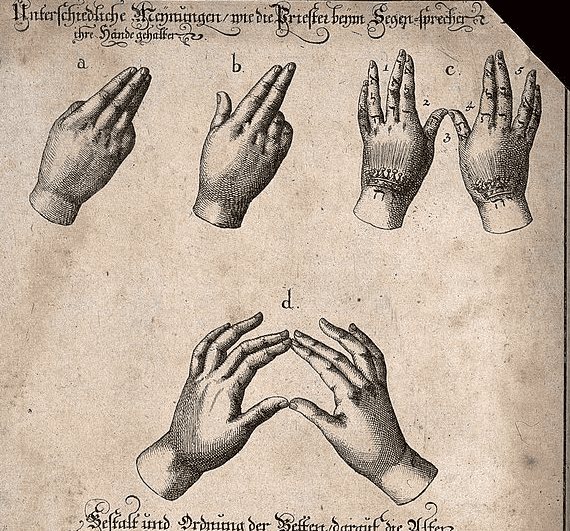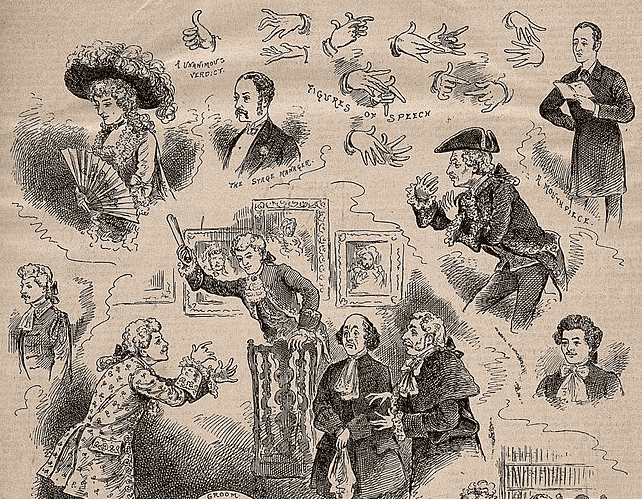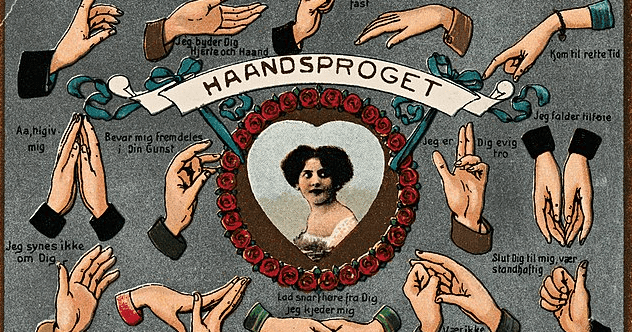For as long as humans have walked the earth, deafness has been a part of our story. It’s fascinating to think that, for thousands of years, deaf individuals have ingeniously crafted complex ways to communicate. In fact, many historians believe that early forms of sign language might even be older than spoken words! Evidence suggests that sign languages were in use as far back as the 4th century BC. Of course, the journey to the sophisticated systems we recognize today has been a long and winding one.
Today, hundreds of unique sign languages are used globally, embraced by over 70 million people. Just like spoken languages, they are rich with the culture and vocabulary of their regions. Thankfully, the world is increasingly recognizing their importance. The United Nations even declared September 23rd as the International Day of Sign Languages and mandates that governments treat sign languages as equal to spoken ones in official settings.
However, the path wasn’t always smooth. The deaf community faced centuries of misunderstanding and discrimination. The value of sign language was often dismissed. But through persistence, these misconceptions were gradually overcome. Let’s dive into ten surprising and enlightening milestones in the development of sign language throughout history.
10. Whispers of Signs in Ancient Greece with Socrates
Believe it or not, discussions about deafness reach back over two thousand years. In Plato’s work Cratylus, written in the fifth-century BC, a conversation unfolds between Socrates and two others about words and names. At one point, Socrates emphasizes the value of making “signs by moving our hands, head, and the rest of our body.” He even uses the example of a horse, pantomiming its movements to communicate without speech.
Historians today view this as evidence that ancient Greeks used an early form of sign language. However, communication wasn’t perfect. Other research suggests that many Greeks believed deaf individuals couldn’t be educated. This misconception, unfortunately, hampered progress for centuries. Philosophers as renowned as Aristotle mistakenly claimed deaf people were “senseless and incapable of reason.” Thankfully, not everyone shared this view, but it took a long time for sign language to truly begin its developmental journey.
9. Sign Language Unites Native American Tribes
Across North America, more than three dozen American Indian Sign Languages (AISL) reflect the diverse communication methods of various tribes. These visual languages have a long history, with Europeans first documenting “hand talk” among Native Americans in 1542. While some initially thought these signs were only for communicating with newcomers, experts now agree they were in use long before European arrival.
Plains Indian Sign Language (PISL) is the most widely known AISL. It was not only used by deaf individuals but also by hunters needing silence and by different tribes communicating during trade. Even famous explorers like Lewis & Clark benefited, using the Plains sign system to interact with various Indigenous groups who spoke different languages.
Sadly, PISL is now considered an “endangered” language by the Oklahoma Museum of Natural History. While few fluent signers remain, there’s hope on reservations for its resurgence.
8. A Shift in European Thinking on Deafness

By the 16th century, European scholars began to move beyond the ancient Greek attitudes towards deaf people. A key figure in this shift was Dutch scholar Rudolf Agricola. In his 1521 publication, De Inventione Dialectica (On Dialectical Invention), Agricola powerfully argued that deaf individuals were fully capable of learning a language.
Inspired by Agricola’s work, Italian doctor Girolamo Cardano, whose own son was deaf, began teaching him hand signals corresponding to Italian words. The lessons were successful and had a broader impact. In 1575, Cardano published his own book, emphasizing reading and writing methods for teaching deaf people and highlighting their inherent intelligence. More scholars started to recognize the potential of sign language.
Later in the 15th century, German doctor Solomon Alberti published a groundbreaking book on deaf culture and language acquisition, arguing that deaf people could learn to read words and lips. His assertion that they could acquire language and be educated truly opened doors. By the end of the 16th century, it was becoming widely accepted that deaf individuals could develop language skills using hand signals.
7. The Monk Who Championed Hand Signing

While scholars like Agricola, Cardano, and Alberti were making academic headway, monks across Europe were busy with practical applications of hand-signing and fingerspelling. Many of these monks, though not deaf themselves, had taken vows of silence, making hand communication essential.
Some believe monks developed complex hand signals as early as the eighth century. However, the 1500s were pivotal for these non-verbal cues to spread. These religious men saw the potential of their sign systems and began teaching hand signals and fingerspelling to deaf children.
Spanish monk Fray Melchor de Yebra took this a step further. In 1593, he published the first book with images and diagrams illustrating how to fingerspell the alphabet. He hoped to use it to attract deaf people to Catholicism and enable priests to communicate with those who couldn’t speak in their final moments. But its impact was far greater. By 1620, Juan Pablo Bonet, a teacher of deaf children, adapted these diagrams for a wider audience, leading to a surge in deaf children learning to fingerspell and sign. A standardized form of non-verbal language began to blossom.
6. Deaf Servants Excel in the Ottoman Empire
While sign language was gradually standardizing in Western Europe, rulers elsewhere already understood its power. Sultans in the Ottoman Empire specifically hired deaf servants for their ability to communicate silently. Their intricate hand languages were used for political discussions in courts and at elite gatherings, perfect for sultans concerned about keeping sensitive information private.
Focused on secrecy, these rulers even learned sign language themselves. European travelers were amazed by how Ottoman elites used it. Sir Paul Rycaut, a 17th-century historian, noted in a 1665 book that there were at least 100 deaf servants in the high court. Leaders valued the discretion offered by these detailed signs, allowing them to “speak” with their deaf aides privately, even around corners or behind curtains, without fear of being overheard. While many cultures saw deafness as a limitation, the Ottomans recognized it as an advantage.
5. Sign Language Gains Ground in England

Fray Melchor de Yebra’s 1593 fingerspelling guide was a game-changer. Fifty-one years later, in 1644, non-verbal communication took another leap when English doctor John Bulwer published Chirologia, or, The naturall language of the hand. In this book, Bulwer explored non-verbal communication, arguing that the hand “speaks all languages” despite the “formal differences” of spoken words. He also compiled a list of universal hand gestures, including some we still recognize, like clutching the chest for sadness or wagging a finger for disapproval (and even using the middle finger to “chastise men”).
But Bulwer’s work went deeper. He discussed the need for a finger alphabet and a non-verbal number system, advocating for a standardized way to communicate by hand. His book included detailed diagrams of alphabet letters and hand gestures. Though basic compared to today’s sign languages, many of these diagrams remarkably resemble modern expressions. The book’s popularity significantly boosted the use of consistent hand signals in Europe, and by the mid-17th century, sign language was gaining serious momentum.
4. A French Priest Standardizes Signs
Inspired by Bulwer’s efforts, a French Catholic priest named Charles-Michel de l’Épée took on the task of standardizing sign language. Drawing from an existing non-verbal language in France (now known as “Old French Sign Language”), de l’Épée created a clear system of signs for common ideas. He also further refined the alphabet spelling system used by deaf people across Europe. His contributions have truly endured.
Linguists now credit de l’Épée’s standardization as the foundation for both French and American Sign Languages. Not stopping there, he established an educational institution for deaf individuals, which still exists today as the National Institute of Young Deaf of Paris. He also contributed to a dictionary, though it was completed after his death. For his tireless work, de l’Épée is widely known as the “Father of the Deaf.”
In 1779, another Frenchman, Pierre Desloge, who was deaf himself, published a book defending sign language as the ideal way to educate those who couldn’t hear. Historians speculate this might be the first book mass-produced by a deaf author.
3. The Dawn of American Sign Language (ASL)
The influence of France’s Charles-Michel de l’Épée spurred further advancements. American Sign Language (ASL) emerged in the early 1800s, building on its French predecessor. Minister Thomas Hopkins Gallaudet had been teaching the alphabet to his deaf neighbor, Alice Cogswell. Inspired by her progress, he aimed to provide education for more deaf children. In 1817, he founded the American School for the Deaf in Hartford, Connecticut.
Gallaudet’s institution was one of several that adapted de l’Épée’s French model for English speakers. With dedicated scholars like Gallaudet, the American version quickly standardized, eventually becoming distinct from its French origins, with its own defined language rules and grammar structures. By 1830, ASL was the preferred signing method across America.
In 1864, President Abraham Lincoln signed a bill creating the National Deaf-Mute College in Washington, D.C. This landmark institution, now known as Gallaudet University, remains the world’s only accredited university specifically for deaf and hard-of-hearing students, honoring Thomas Hopkins Gallaudet’s legacy.
2. A Contentious Debate: Oralism vs. Manualism
As ASL became standardized, some educators began to question its cultural impact, leading to a heated debate in the 19th century. On one side were “manualists,” like Gallaudet, who championed sign language. On the other were “oralists,” who believed deaf individuals should only learn to read lips and speak, not sign.
Oralism gained significant traction in 1880 at the International Congress of Educators of the Deaf in Milan, Italy. Notably, deaf teachers were excluded from this conference. The attending oralists argued that lip-reading and speech were superior for communication. While lip-reading is a useful skill, especially for those who become deaf later in life, the Milan convention heavily favored oralist methods. For years afterward, deaf schools worldwide shifted to oralist teaching, often banning deaf teachers. This meant deaf students had fewer role models and educators they could easily relate to.
Alexander Graham Bell, the inventor of the telephone, was a prominent oralist. His wife and mother were both deaf, giving him experience within the community, but his views were controversial. He considered deafness a threat to American identity and even argued against deaf people marrying or having children. Bell advocated for eliminating sign language and banning deaf teachers. Though the oralist stance has largely lost the debate today, Bell’s public comments about the supposed “defective” nature of deaf people contributed to a lasting negative stigma.
1. Sign Language Flourishes in the Modern Era
By the 1960s, American Sign Language was well-established, yet many linguists, influenced by the prominence of oralism, hesitated to study it. This began to change when Gallaudet professor William Stokoe started researching the linguistics of signing. Despite strong criticism from oralist scholars, Stokoe persevered and secured a grant from the National Science Foundation.
In 1965, Stokoe published the Dictionary of American Sign Language on Linguistic Principles. This groundbreaking book almost immediately transformed deaf education in America. Teachers increasingly embraced manualist theory, and ASL thrived. Building on Stokoe’s legacy, another Gallaudet professor, Clayton Valli, published The Gallaudet Dictionary of American Sign Language in 2006. It remains one of the most widely used ASL reference books, containing thousands of illustrations, etymological information, and a detailed index.
Today, sign language has expanded far beyond its French and American origins. In China, for example, the government standardized several sign language dialects through the 2010s, releasing new standards for Chinese Sign Language in 2018. This system now includes over 5,000 common words linked to frequently used characters in the spoken language, demonstrating the global embrace and evolution of this vital form of communication.
The journey of sign language is a testament to human ingenuity and the profound need to connect. From ancient gestures to complex linguistic systems, its development reflects a rich history of culture, struggle, and triumph. The ongoing efforts to standardize and promote sign languages worldwide ensure that deaf communities continue to thrive and communicate effectively.
What fact about sign language development surprised you the most? Share your thoughts in the comments below!










